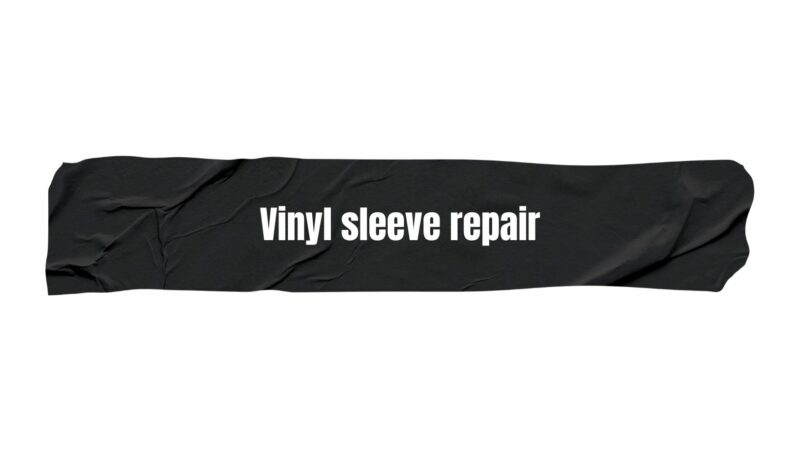Vinyl records hold a unique place in music history, offering a tangible and nostalgic connection to the past. Alongside the records themselves, the sleeves that house them are invaluable pieces of art and culture. However, these sleeves are not immune to the passage of time and the wear and tear that can accompany it. This article delves into the world of vinyl sleeve repair, exploring the common types of damage, techniques for restoration, and the importance of preserving these artifacts for future generations.
The Significance of Vinyl Sleeves: Vinyl record sleeves are more than mere protective coverings; they are a canvas for artistic expression, carrying album art, liner notes, and historical context. The preservation of vinyl sleeves is crucial for maintaining the authenticity and visual appeal of a record collection.
Common Types of Sleeve Damage:
- Seam Split: As discussed in a previous article, seam split occurs when the seams of the sleeve separate due to factors like material deterioration, pressure, and improper handling.
- Edge Wear: Over time, the edges of sleeves can wear down due to friction and mishandling. This can result in creases, tears, or even small chunks missing from the edges.
- Stains and Discoloration: Vinyl sleeves are susceptible to staining from spills, moisture, and exposure to light. This can lead to discoloration and deterioration of the artwork.
- Creases and Folds: Mishandling and poor storage can cause creases and folds in the sleeves, affecting both the appearance and structural integrity.
- Tears and Rips: Accidental tears and rips can occur when handling sleeves without care. These damages can range from small tears along the edges to larger rips that impact the artwork and content inside.
Techniques for Vinyl Sleeve Repair:
- Seam Repair: To address seam split, carefully apply archival adhesive to the separated areas of the seam. Gently press the areas together and allow the adhesive to dry. Reinforce the inside with archival tape if necessary.
- Edge Repair: For edge wear, consider using archival tape to reinforce worn areas. Use a color-matched tape to blend in with the original design. For more significant damage, use acid-free glue and delicate application to mend tears and missing chunks.
- Stain Removal: Removing stains requires a delicate touch. Test any cleaning solution on a small, inconspicuous area first. Use a gentle, acid-free cleaning solution and a soft cloth to carefully remove stains without damaging the artwork.
- Crease and Fold Removal: To address creases and folds, place the sleeve between two sheets of acid-free paper and carefully apply pressure. Gradually increase pressure over time, ensuring not to overdo it and cause further damage.
- Tear Repair: Small tears can be repaired using archival tape or glue. For larger tears, use tissue paper as a reinforcement layer before applying adhesive. Ensure the tissue paper matches the color and texture of the sleeve.
Preservation and Preventative Measures:
- Proper Handling: Handle vinyl sleeves with clean hands and avoid gripping the edges tightly. Gently slide records in and out of sleeves to prevent unnecessary stress on the seams.
- Storage: Store vinyl records upright on sturdy shelves to prevent excessive pressure on the sleeves. Use acid-free polyethylene sleeves within the cardboard sleeves to provide an extra layer of protection.
- Temperature and Humidity Control: Maintain a stable environment to prevent deterioration due to extreme temperature and humidity changes.
- UV Protection: Keep vinyl sleeves away from direct sunlight and fluorescent lighting, as UV rays can cause fading and discoloration.
- Regular Inspection: Regularly inspect your vinyl sleeves for signs of damage or wear. Catching issues early can help prevent further deterioration.
Conclusion: Vinyl sleeve repair is both an art and a science, requiring careful attention to detail and a commitment to preserving the cultural and historical value of these artifacts. As custodians of music history, collectors and enthusiasts have the responsibility to repair, restore, and protect vinyl sleeves for future generations. By understanding the common types of damage and employing appropriate repair techniques, we can ensure that the stories told through album art and liner notes continue to captivate and inspire audiences for years to come.


